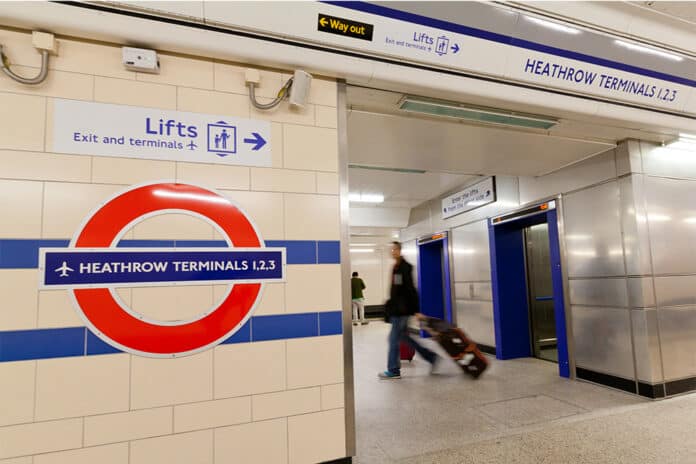All Tube and Elizabeth line fares for journeys that go through Zone 1 and start or end at Heathrow Airport will now be charged at peak rate. The change was introduced on 4 September, with Transport for London making the announcement on 3 September.
From 4 September, the charge for a new Oyster card increased from £5 to £7.
Due to the financial challenges caused by the pandemic, Transport for London (TfL) has required extraordinary funding from Government to continue safe and efficient operation of the transport network. Significant conditions have been put on this funding.
In December 2021, the Mayor outlined a number of fares options that were being explored to comply with the Government’s funding conditions and, since then, TfL has undertaken Equality Impact Assessments and engaged with stakeholders. Following this, it has been agreed that the changes to Heathrow fares and Oyster charges should be implemented from 4 September 2022 to help achieve Government requirements and support TfL’s target to achieve financially sustainable operations by April 2023.
Journeys to the airport that avoid Zone 1 would continue to have an off-peak fare, while journeys ending at stations before Heathrow, like Hatton Cross, Hounslow West and Hayes & Harlington will also not be affected by the changes.
The changes have been introduced after the school summer holidays to ensure that families travelling to and from Heathrow, as well as summer visitors, avoided additional costs where possible. TfL is also working to restart the discounted travel available to airport workers across all Team Heathrow employers. All pay as you go journeys will also continue to benefit from daily and weekly capping and all concessions, including free travel of under 11s, will remain in place.
The Mayor’s Hopper fare also means that unlimited bus and tram journeys for the price of a single journey can be made providing they are made within an hour of first touching in. TfL will continue to monitor bus services in the Heathrow area as part of wider, ongoing work to ensure bus services in London meet customer demand.
The operations of an airport mean that demand for stations at Heathrow does not conform to the usual peak periods seen across the rest of the network. The changes to Tube and Elizabeth line fares to Heathrow and the £2 increase for an Oyster card are expected to generate additional income of up to £27 million per year calculated up to 2027-28 and support TfL’s target to achieve financially sustainable operations by April 2023.
The Mayor of London, Sadiq Khan, said: “Raising more money from fares was a condition of our funding deal with Government. This fare increase was chosen as one which would have a lower impact on Londoners currently worried about the cost of living, and to ensure that journeys that avoid zone 1 will not be affected, helping to protect those living near and working at the airport.”
Shashi Verma, TfL chief technology officer said: “Changes to the fares to Heathrow and the increase to the Oyster card fee are necessary to comply with the Government’s funding conditions. These will help to ensure that TfL can reach financial sustainability as soon as possible.
“Both TfL and the Mayor remain committed to keeping fares as affordable as possible. The Hopper fare for buses and trams as well as daily and weekly fare capping continue to help keep down the cost of travel across London for everyone.”
For more information, please visit tfl.gov.uk/fares
TfL said that changes in Elizabeth line fares to and from Heathrow are unrelated to the start of trains running directly from Reading and Heathrow to Abbey Wood and from Shenfield to Paddington in November 2022.



































 0113 2082620
0113 2082620 info@railbusinessdaily.com
info@railbusinessdaily.com 15 Mariner Court, Wakefield WF4 3FL
15 Mariner Court, Wakefield WF4 3FL

